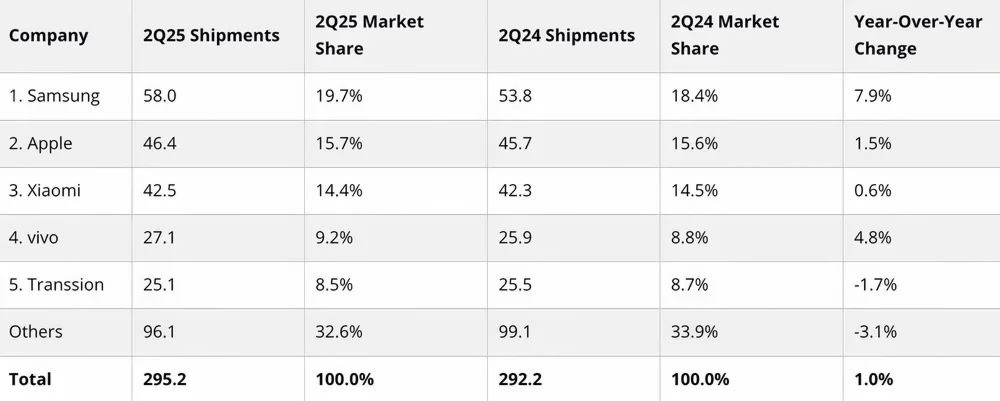
According to the latest data from IDC, Samsung shipped 58 million smartphones in the second quarter, a 7.9% year-on-year growth. This gave the company a 19.7% global market share, maintaining its leading position and leaving its major competitors far behind.
Meanwhile, Apple ranked second with 46.4 million iPhones shipped, up just 1.5% year-on-year, corresponding to 15.7% market share. Notably, Apple's sales in China, its second most important market after the US, fell 1%, as Chinese consumers increasingly favor domestic brands and more competitively priced products.
However, thanks to strong growth in emerging markets, Apple still maintains its overall growth rate, but the gap with Samsung is gradually widening.
Galaxy AI helps Samsung accelerate
IDC's report shows that Samsung's success in the past quarter came from the Galaxy A36 and Galaxy A56 series, which are in the mid-range segment but are integrated with Galaxy AI features, which were previously only available on flagship lines.
“Bringing premium AI features to the mid-range has helped Samsung expand its user base and drive demand for real AI experiences,” said Francisco Jeronimo, vice president of client devices at IDC. “This is especially effective in a market where consumers are curious but still wary of the price of premium models.”
Xiaomi, vivo and Transsion are close behind
In third place, Xiaomi shipped 42.5 million units, accounting for 14.4% of the market, despite a modest growth of 0.6%. The next two positions belong to vivo (27.1 million units) and Transsion (25.1 million units), both strong brands in the Asian and African markets.
Although major brands maintained stable performance, the overall market only grew by 1%, with total sales reaching 295.2 million units in the second quarter. Comments on this are relatively positive results in the context of many economies facing inflation, unemployment and tight consumer sentiment.
China market continues to be a bottleneck
Not only Apple, many big companies also recorded a decline in sales in China last quarter. IDC assessed that poor performance in this market was one of the main reasons for the decline in global growth, despite positive results in other regions.

However, researchers remain optimistic about the market in the coming time. The second quarter of 2025 is the eighth consecutive quarter of growth, which has not happened since 2013, showing signs of sustainable recovery for the industry.
IDC expects the next growth driver to come from AI-powered devices in the mid-range segment, where companies are trying to bring them closer to the majority of users.
Source: https://baolaocai.vn/5-hang-nao-dang-dan-dau-thi-truong-smartphone-toan-cau-post648786.html



































































































Comment (0)